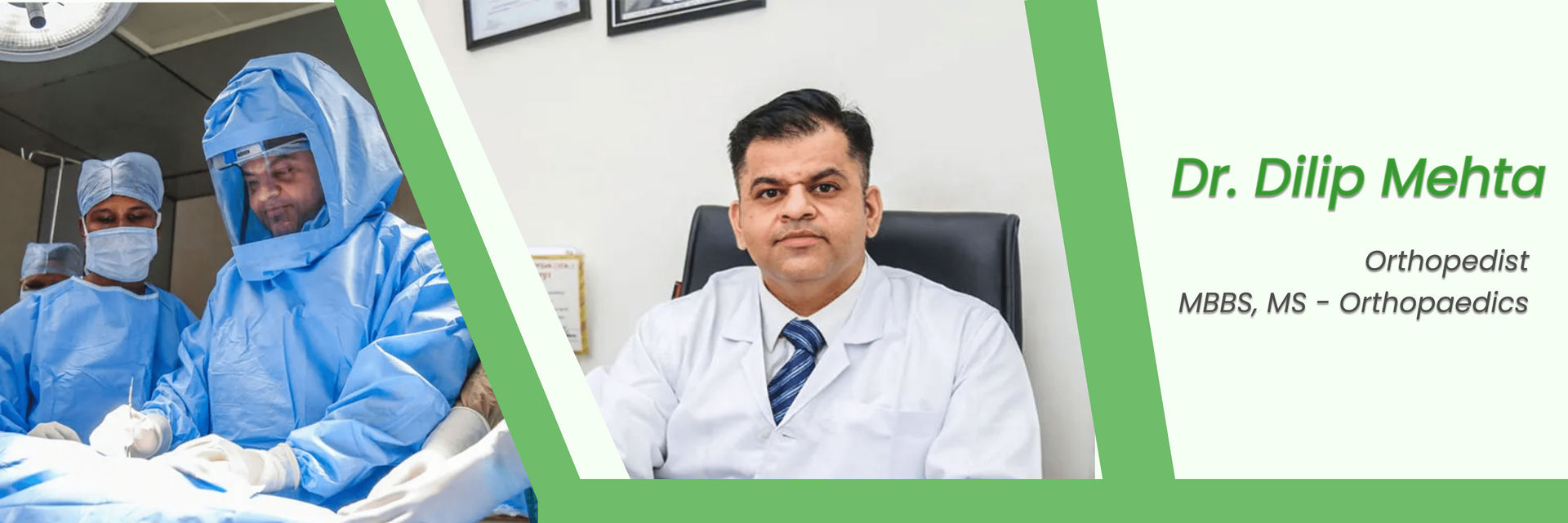What is shoulder surgery with anchors?
Small anchors are utilized during shoulder surgery to support and heal torn or damaged tissues in the shoulder joint. These anchors, which are placed into the bone and made of biocompatible materials, reconnect tendons, ligaments, or cartilage. This procedure helps patients regain their range of motion and do daily duties by enhancing joint function, lowering discomfort, and restoring stability to the shoulder.
Your health is too important to ignore – schedule your appointment now.
Anchors can unlock the possibilities of shoulder surgery. Learn how these little miracles can provide comfort and rebuild the strength and stability of your shoulder.
What conditions can be treated with shoulder surgery using anchors?
Various problems and injuries can be treated with shoulder surgery using anchors, including:
Rotator cuff tears:
Anchors can be utilized to repair and strengthen torn tissues in cases where the tendons of the rotator cuff are ripped.
Labral tears:
In cases of instability or labral rips, the labrum, a ring of cartilage that surrounds the shoulder socket, can be restored using anchors.
Shoulder instability:
Anchors can be used to tighten and stabilize the ligaments and joint capsule if the shoulder joint is prone to dislocation or subluxation.
SLAP (Superior Labrum Anterior to Posterior) tears:
Anchors can be used to repair and regain stability in SLAP rips, which involve a tear in the upper region of the labrum.
Biceps tendon injuries:
When the biceps tendon is injured, anchors can be utilized to either stabilize the tendon in its correct position or reattach the tendon to the bone.
Patients can have better shoulder function, less pain, and a higher quality of life by having shoulder surgery with anchors to treat these disorders.
Ever wondered how long shoulder anchors last? Keep reading to find out.
How long do shoulder anchors last?
The type of shoulder anchor utilized, the particular treatment carried out, and patient-specific circumstances can all affect how long the anchors last. But generally speaking, shoulder anchors are made to give the healed or rebuilt shoulder structures long-lasting stability and support.
Modern shoulder anchors are constructed from strong materials like titanium or biodegradable polymers. Anchors made of titanium are known for their durability and ability to withstand corrosion. While bioabsorbable anchors degrade and are absorbed by the body, they continue to offer adequate support for the healing process.
It's crucial to remember that shoulder anchor performance and durability also depend on elements including correct surgical procedure, recovery, and attention to postoperative advice.
The long-term value of shoulder anchors can be increased by following to the surgeon's instructions, performing suitable rehabilitation activities, and maintaining general shoulder health.
In the end, the durability of shoulder anchors can differ from patient to patient, so it's important to speak with an orthopedic surgeon or healthcare provider for details on your particular case.
Let’s understand the process of surgical anchor dissolution.
How long does it take for surgical anchors to dissolve?
The type of anchor utilized, and the surgery can affect how surgical anchors dissolve. The goal of bio-absorbable anchors is for them to degrade and be absorbed by the body.
The time it takes for bio-absorbable anchors to completely dissolve can be anything between a few months and a few years. It's crucial to keep in mind that the anchors give the mended structures stability and support during the first healing phase.
Several factors can influence the rate at which anchors dissolve, including their size, material composition, the patient's individual healing process, and the location of the anchors.
Following the post-operative care instructions and rehabilitation recommendations provided by the surgeon and healthcare providers is crucial in order to achieve optimal healing and ensure the anchors are absorbed in the right time.
If you have any concerns or queries regarding the dissolving time of surgical anchors in your specific case, it is recommended that you seek personalized information and advice from your orthopedic surgeon or healthcare provider.
Let’s explore the procedure of shoulder surgery with anchors.
Take charge of your health and your life. Contact us today!
How is shoulder surgery with anchors performed?
Using arthroscopy procedures, which entail making tiny incisions, a camera, and specialized instruments are used to access and fix the shoulder joint, shoulder surgery with anchors is often carried out. The process is described in general here:
| Anesthesia | The patient is often given general anesthesia, which renders them unconscious throughout the procedure. The shoulder and arm may be made to feel numb by means of a regional anesthetic or a nerve block. |
| Incisions | Small incisions, referred to as portals, are created all the way around the shoulder joint. The surgeon can enter the arthroscope, a tiny camera, and surgical tools into the shoulder through these portals. |
| Inspection and evaluation | To determine the severity of the injury or ailment, the surgeon uses the arthroscope to look at the shoulder joint. The structures inside the joint may be seen thanks to this. |
| Anchoring | After locating the injured or torn tissue, the surgeon prepares the surface of the bone by drilling a few tiny holes or sockets. After that, the anchor—a tiny, composed of metal or biocompatible material—is put into the bone socket. |
The surgeon employs sutures or other methods to reattach and heal the harmed or torn tissue. Tissue repair or stabilization. The sutures are fastened to the anchor, giving the restored tissue stability and support.
Discover the benefits of shoulder surgery with anchors.
What are the benefits of shoulder surgery with anchors?
People with shoulder problems or injuries can enjoy shoulder surgery with anchors in many ways. Some of the main benefits are as follows:
| Restored Stability | By reattaching and strengthening torn or damaged tissues like - tendons, ligaments, or cartilage, and shoulder anchors aid in restoring stability to the joint. This can enhance shoulder functionality and lower the chance of recurrent instability or dislocations. |
| Pain Relief | Shoulder surgery with anchors can reduce pain by treating the underlying cause of shoulder pain, such as a torn rotator cuff or labrum. As a result, people can take part in daily activities and sports. |
| Increased Range of Motion | By repairing and stabilizing the shoulder structures with anchors, you can increase your flexibility and range of motion. |
| Enhanced Quality of Life | Shoulder surgery with anchors can assist people in regaining their quality of life when shoulder conditions or injuries prevent them from engaging in daily activities, hobbies, or sports. They can continue their regular activities and lead an active lifestyle because their shoulder function and discomfort are both improved. |
| Faster Recovery | Arthroscopy shoulder surgery with anchors requires smaller incisions than open procedures, which can reduce discomfort, scarring, and recovery time. People can resume their usual activities and jobs earlier as a result. |
Arthroscopy procedures used in shoulder surgery with anchors reduce tissue trauma and injury in an invasive manner. This leads to reduced damage to nearby structures, quicker recovery, and fewer difficulties.
Let’s navigate the path to healing after shoulder surgery.
What is the recovery process like after shoulder surgery with anchors?
The recovery period following shoulder surgery with anchors can differ based on:
An outline of what to expect throughout the recovery period is given below:
Immediately after surgery:
Following surgery, patients are watched in a recovery area until the effects of the anesthetic wear off. Painkillers could be given to treat discomfort. For the sake of preserving the reconstructed structures, the shoulder may be immobilized with a sling or brace.
The initial phases of recovery (the first few weeks):
Follow the surgeon's recommendations for shoulder movement restrictions, pain management, and wound care throughout this stage. Early physical therapy exercises can maintain the shoulder's range of motion and prevent stiffness.
Rehabilitation and physical therapy:
A physical therapy program will be recommended as the healing process develops to strengthen the shoulder. increase the range of motion, and improve functional abilities. Patients will be led by the therapist through particular stretches and exercises designed for their condition.
Gradual return to activities:
Depending on the person and the particular treatment completed, the time frame for returning to regular activities and sports will vary. When it is safe to resume particular activities as well as instructions on how to raise intensity and load will be provided by the surgeon and physical therapist.
Follow-up sessions:
Follow-up appointments should be made on a regular basis to check the healing process, stability, and functionality of the shoulder, and make any required alterations to the rehabilitation program.
Let’s look at the complications of shoulder surgery with anchors.
What are the potential risks and complications of shoulder surgery with anchors?
Although shoulder surgery with anchors is risk-free and successful, there are still possible side effects and complications. These possibilities should be understood and discussed with your physician. These dangers could arise:
Infection:
There's a chance that the surgical site will become infected. Antibiotics are enough to treat this, but in some circumstances, further care, or a revision operation may be needed.
Hematoma or Excessive Bleeding:
A hematoma, or an excess of blood, could develop close to the surgery site. Drainage or more medical help might be needed.
Nerve or Blood Vessel Injury:
There is a slight chance that the surgery can harm surrounding nerves or blood vessels. which could result in momentary or, in very rare circumstances, permanent numbness, weakness, or circulation issues.
Unfavorable Anesthesia Reaction:
During surgery, the anesthesia may cause difficulties or unfavorable responses in some patients.
Failure to Resolve Symptoms:
In a few instances, surgery may not ease the symptoms or produce the expected results, necessitating extra testing or medical care.
Stiffness or Limited Range of Motion:
Some people may suffer stiffness or restricted range of motion in the shoulder following surgery. For reducing these problems, physical treatment and rehabilitation exercises are essential.
Deep Vein Thrombosis (DVT):
Although it's uncommon, there's a small chance that a blood clot will form in the arm's deep veins. Early mobilization, the wearing of compression stockings, and the use of the right blood-thinning drugs can all help to reduce this.
It's critical to remember that while the hazards and difficulties listed above are possible, not everyone will encounter them. Also, to the precautions surgeons take to reduce these dangers, improvements in surgical methods have also led to better patient outcomes.
Take charge of your health with the best treatment. Book your consultation now.
References:






